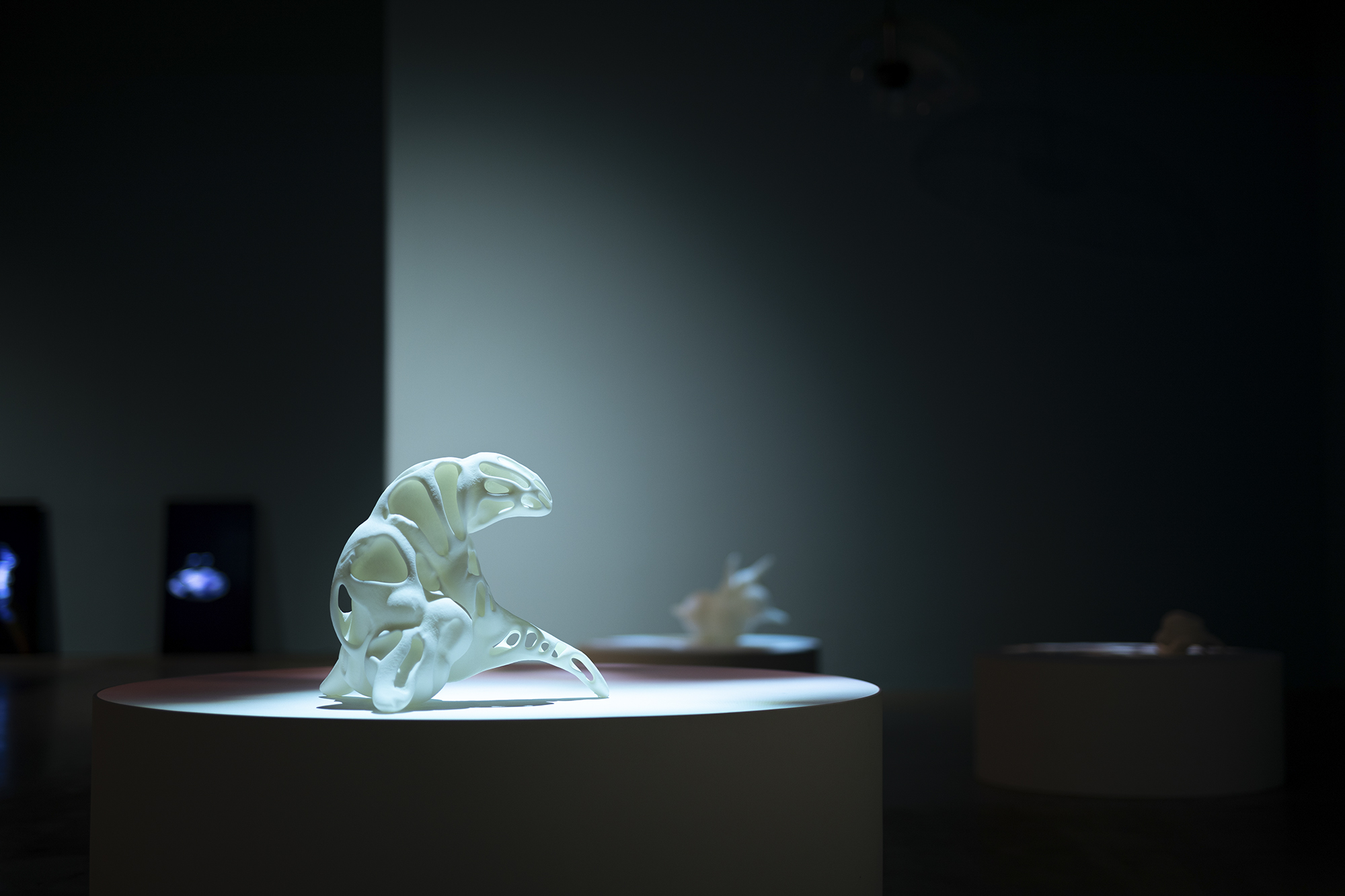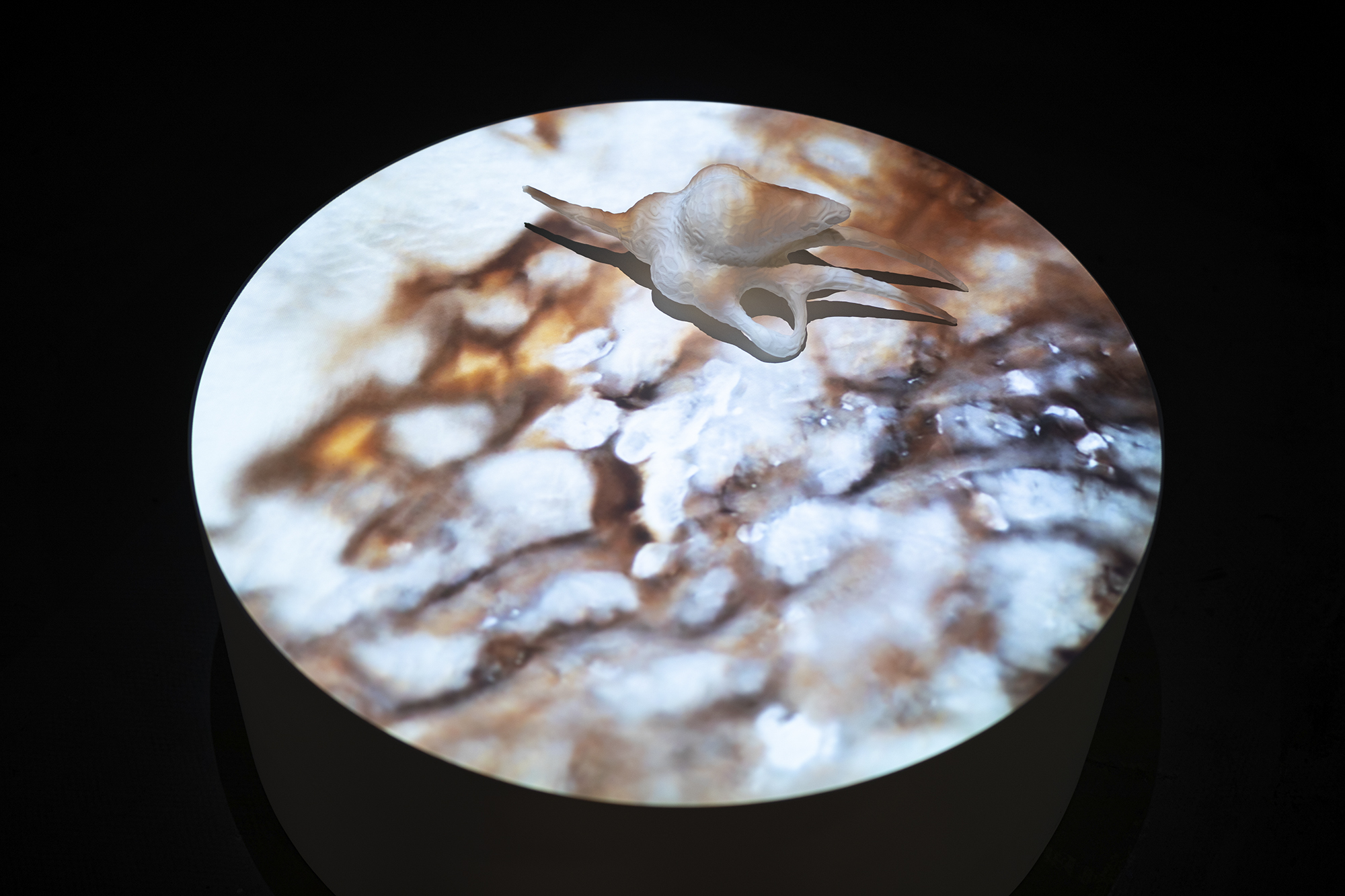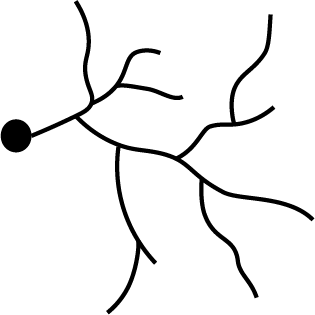




Ephemeroptera (Foram)
2022
Three-channel video, 3D-printed sculptures
Dimensions Variable
Image courtesy of Chronus Art Center

Ephemeroptera (Morning Mushroom)
2021
Three-channel video, custom aluminum panels, foam
Dimensions Variable
Ephemeroptera (蜉蝣, fú yóu), the most ancient aquatic insects that are often used along with the morning mushroom in the Chinese language to represent the ephemeral cycle of life. Zhuangzi (Chuang-tzu 莊子), the late 4th century BC Daoist philosopher, famously wrote about the incomprehensibility of the great: “The morning mushroom does not know of the waxing and waning of the moon.”
By juxtaposing the self-organizing intelligence of inorganic matter at micro and macro levels with the "training" and "learning" intelligence of machines, the exploration of thought and intelligence are extended to complex phenomena beyond the biological realm. The color and textural data of the moving image is extracted and transformed into a flowing auditory spectrum, forming a dynamic soundscape of the on-site installation. In the entangled, folded, and extended physical and digital time-space, geochemical transformations and morphogenesis that predate human existence resonate with our contemporary reverie of artificial life and intelligence.
Ephemeroptera (Foram) is commissioned and supported by Exhibition Entangled: bio/media at Chronus Art Center (CAC).
